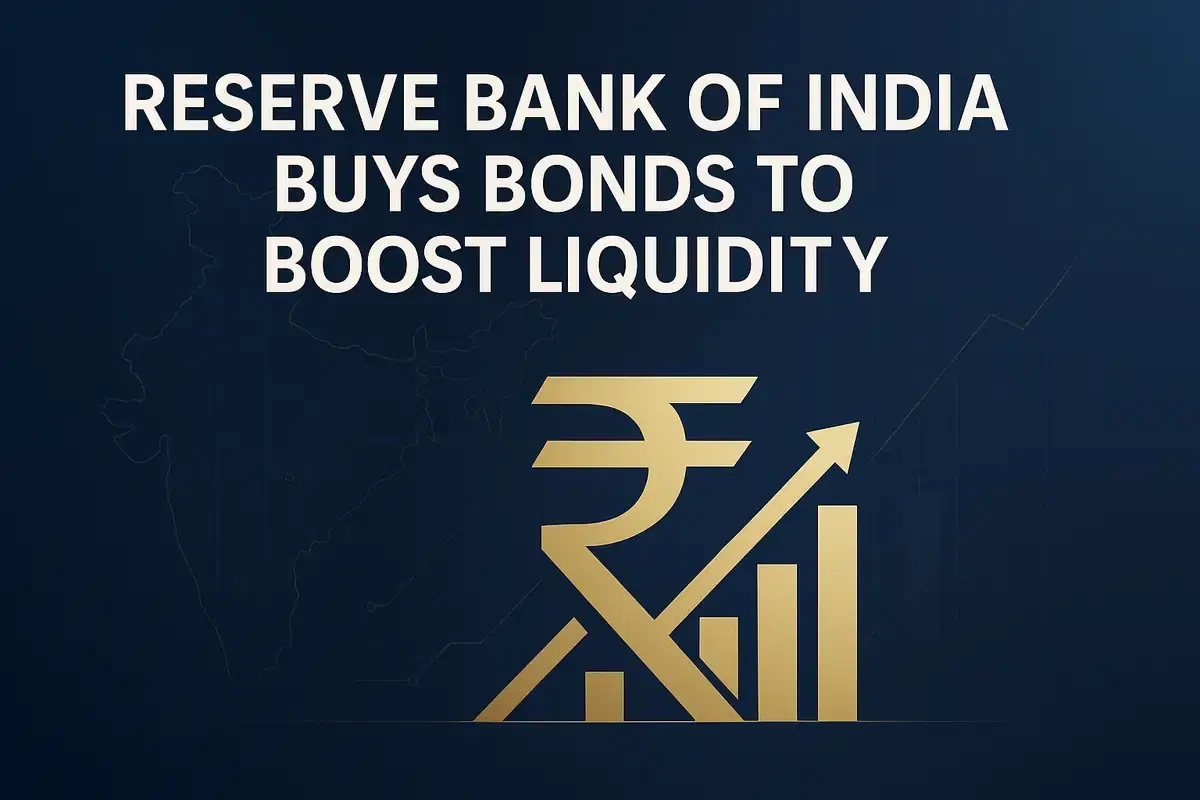RBI तरलता की कमी को दूर करने के लिए अगले साल की शुरुआत में बॉन्ड खरीद फिर से शुरू कर सकता है
Economy
|
29th October 2025, 4:29 AM

▶
Short Description :
Detailed Coverage :
विश्लेषक भविष्यवाणी कर रहे हैं कि भारतीय रिजर्व बैंक (RBI) अगले साल की पहली तिमाही में, विशेष रूप से जनवरी और मार्च 2025 के बीच, सरकारी बॉन्ड खरीदना फिर से शुरू कर सकता है। इस रणनीतिक कदम का उद्देश्य भारतीय ऋणदाताओं के बीच देखी जा रही तरलता की घटती कमी को कम करना है। अनुमान बताते हैं कि केंद्रीय बैंक लगभग ₹1 लाख करोड़ के बॉन्ड खरीद सकता है, जिसमें आईसीआईसीआई सिक्योरिटीज प्राइमरी डीलरशिप के कुछ अनुमानों के अनुसार ऋण खरीद और विदेशी मुद्रा स्वैप के संयोजन के माध्यम से ₹1.5 लाख करोड़ तक की राशि डाली जा सकती है।
The liquidity shortage has emerged as a concern following the RBI's efforts to support the Indian rupee, which has drained cash from the system. Seasonal factors like tax outflows and higher cash demand during festivals have further exacerbated this situation. Data from Bloomberg Economics points to a deficit in banking liquidity in late October, a stark contrast to the surplus seen in August.
With limited scope for further interest rate reductions, the RBI is resorting to alternative measures to manage borrowing costs and uphold Governor Sanjay Malhotra’s objective of maintaining surplus financial liquidity. The central bank has already increased short-term cash injections and conducted foreign-exchange swaps, where it purchases dollars in exchange for rupees, thereby adding liquidity. However, bond purchases are considered by experts like Gaura Sen Gupta of IDFC FIRST Bank as the most effective method for sustained liquidity infusion and supporting the bond market.
An increase in borrowing costs and constraints on bank lending could pose risks to India's economic growth, particularly amidst global economic uncertainties like US tariffs on Indian goods. While a potential US-India trade deal could boost foreign inflows and ease liquidity concerns, the immediate outlook points towards the RBI's return to bond buying.
Impact This anticipated action by the RBI is crucial for ensuring the smooth functioning of the financial markets, managing interest rates, and supporting credit availability. It aims to stabilize the bond market and provide necessary cash to banks, thereby indirectly supporting economic activities. Rating: 7/10.
Difficult Terms Liquidity: Refers to the availability of cash and easily convertible assets in the financial system. High liquidity ensures funds are readily available for lending and investment. Bond Purchases: The act by the central bank of buying government securities (bonds) from the market, which injects money into the economy. Foreign Exchange Swaps: A transaction where a central bank buys foreign currency (e.g., US dollars) from local banks, providing them with domestic currency (rupees), and agrees to reverse the transaction later. This increases the domestic currency in circulation. Interest Rates: The cost of borrowing money or the return on savings. Central banks adjust these to influence economic activity. Banking Liquidity Deficit/Surplus: This indicates whether banks collectively have less (deficit) or more (surplus) cash on hand than is needed to meet their immediate obligations and lending requirements.